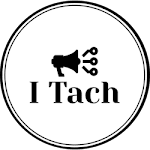The Intersection of Arts and Technology: A Harmonious Symphony
In a world driven by innovation, the convergence of arts and technology has become a dynamic and transformative force. This article explores the intricate interplay between these seemingly disparate realms, unraveling the ways in which technology has become a canvas for artistic expression and a catalyst for creative evolution.
I. Introduction
Art and technology, often viewed as distinct domains, are increasingly entwined in a symbiotic relationship. This introduction sets the stage for an exploration of how technology acts as both a muse and a medium for artistic endeavors.
II. Historical Context
A. Early Collaborations
The relationship between arts and technology dates back centuries, with early examples such as the fusion of artistic craftsmanship with mechanical innovations during the Renaissance.
B. Impact of Industrialization
The industrial revolution marked a significant turning point, influencing artistic movements and prompting artists to incorporate machinery and new materials into their works.
III. Digital Revolution: A Paradigm Shift
A. Emergence of Digital Art
The advent of computers and digital tools in the latter half of the 20th century paved the way for a new era of artistic expression, giving birth to digital art forms.
B. Democratization of Creation
Technology democratized the creation of art, making tools and platforms accessible to a broader range of artists and allowing for diverse voices to be heard.
IV. Virtual Reality and Augmented Reality
A. Immersive Experiences
The marriage of art and virtual reality has birthed immersive experiences, where audiences can step into the artist's world and actively engage with the artwork.
B. Enhancing Exhibitions
Augmented reality enriches traditional exhibitions, adding layers of information, interactivity, and storytelling to enhance the viewer's understanding.
V. Algorithmic Art and Machine Learning
A. Artistic Algorithms
The intersection of arts and technology delves into algorithmic art, where mathematical algorithms generate visually stunning and unique creations.
B. Machine Learning in Creativity
Machine learning algorithms analyze vast datasets to create art, challenging traditional notions of authorship and pushing the boundaries of creativity.
VI. Interactive Installations and Public Art
A. Engaging the Public
Technology facilitates interactive installations that invite the public to actively participate, blurring the line between the observer and the creator.
B. Smart Cities and Digital Murals
Artists leverage technology to contribute to the aesthetics of urban spaces, with digital murals and interactive installations enhancing the cultural fabric of smart cities.
VII. Wearable Technology in Performance Arts
A. Incorporating Wearables
Performers integrate wearable technology into their acts, creating mesmerizing visual spectacles that merge the human body with digital elements.
B. Synthesis of Sound and Light
Wearable technology not only enhances visual aesthetics but also synchronizes with sound, creating multisensory experiences in live performances.
VIII. Challenges and Ethical Considerations
A. Ownership and Digital Art
The digital realm raises questions about ownership and reproduction rights, prompting discussions about the commercialization of digital artworks.
B. Ethics of AI-generated Art
The use of artificial intelligence in art creation raises ethical concerns, including questions about bias, accountability, and the role of the human artist.
IX. Future Prospects and Innovations
A. Emerging Technologies
Artists and technologists continue to explore new frontiers, with emerging technologies like extended reality (XR) and neurotechnology shaping the future of artistic expression.
B. Collaborative Initiatives
The collaboration between artists and technology experts leads to groundbreaking innovations, fostering a collaborative ecosystem that propels both fields forward.
X. Conclusion
As technology becomes an ever-present facet of our lives, its integration with the arts is not just a trend but a transformative evolution. This conclusion reflects on the harmonious synergy between arts and technology, inviting readers to appreciate the rich tapestry woven by their intersection.
XI. Unlocking Creativity: FAQs
Q1. How has technology influenced traditional art forms?
Technology has influenced traditional art forms by providing new tools, materials, and platforms for artists. Digital tools, virtual reality, and augmented reality have expanded the possibilities for artistic expression.
Q2. What are the ethical considerations in AI-generated art?
The ethical considerations in AI-generated art include issues of bias in algorithms, questions about authorship and ownership, and concerns about the impact of AI on the role of human artists.
Q3. How can artists and technologists collaborate effectively?
Effective collaboration between artists and technologists involves open communication, mutual understanding of each other's expertise, and a willingness to explore innovative ideas together.
Q4. What are some examples of famous artworks using technology?
Famous examples include digital art installations like Yayoi Kusama's Infinity Mirror Rooms, AI-generated artworks like "Edmond de Belamy," and immersive experiences like Olafur Eliasson's "The Weather Project."
Q5. How can individuals explore the intersection of arts and technology in their local communities?
Individuals can explore the intersection of arts and technology by attending digital art exhibitions, participating in interactive installations, and engaging with local initiatives that integrate technology into public art and cultural events.

